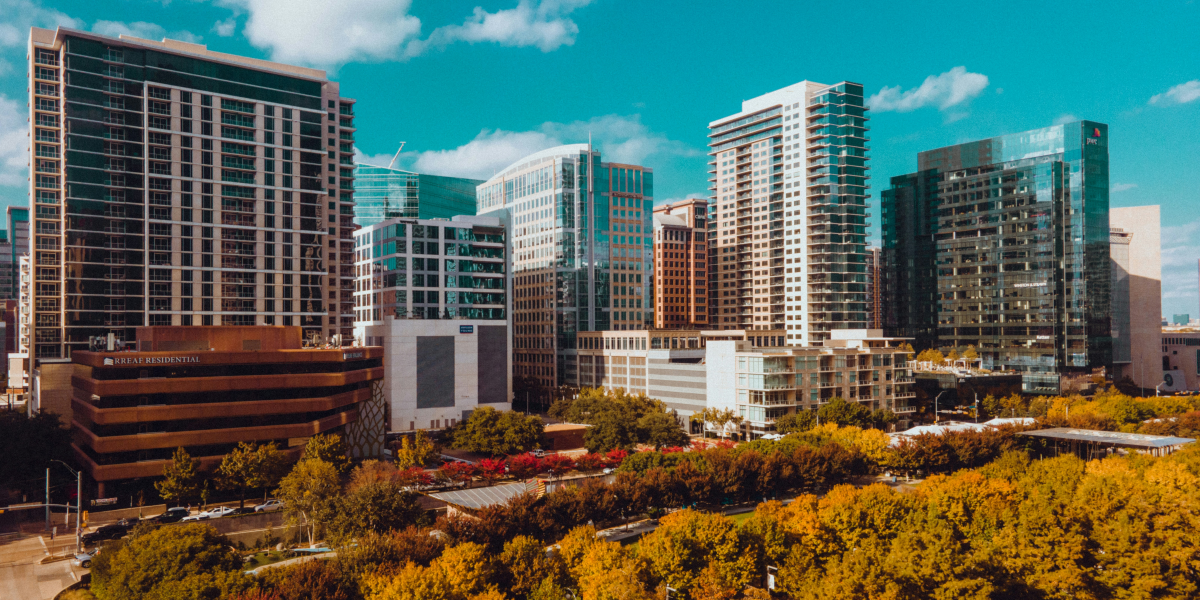Why Are Green Spaces Gaining Importance in Dallas?
Dallas, known for its sprawling highways and iconic skyline, is experiencing a refreshing shift. As the city expands, more emphasis is being placed on green spaces—parks, nature trails, and recreational areas that offer residents a breath of fresh air amid the urban hustle. The rise in Dallas’s green spaces speaks to a growing recognition that nature is vital not only for beauty but also for community health, well-being, and city life overall.
In recent years, urban planners and city officials have worked together to create a city where nature and development coexist. This movement has led to the development of new parks and green areas, as well as the preservation of existing natural spaces. Projects like Klyde Warren Park, which sits atop a freeway, and the massive Trinity River Corridor project reflect the city’s commitment to providing accessible outdoor spaces for all residents. These efforts are making Dallas a greener, more livable city, where nature is an integral part of daily life.
The benefits of green spaces go beyond aesthetics. Studies show that people living in areas with more parks and outdoor recreational options report higher levels of happiness, physical activity, and community connection. As Dallas builds more of these green oases, residents gain more opportunities to relax, unwind, and enjoy time with family and friends. In a fast-paced city, these green spaces offer a valuable escape, promoting a healthier and more balanced lifestyle.
How Are Dallas’s Green Spaces Shaping Community Life?
Green spaces in Dallas are more than just places to enjoy nature—they are community hubs that bring people together. In areas like Klyde Warren Park, residents can enjoy food trucks, yoga classes, and concerts in a vibrant outdoor setting. By transforming these green areas into lively community spaces, Dallas is creating places where people from all walks of life can come together, relax, and connect. This sense of shared space and connection strengthens the city’s social fabric, allowing neighborhoods to become closer and more cohesive.
Moreover, green spaces have been shown to reduce stress and boost mood, making them valuable resources for mental well-being. The Dallas Arboretum and Botanical Garden is a prime example of a green space that fosters tranquility and mindfulness, with its carefully curated gardens and seasonal flower displays. For Dallas residents who may not have the time or means to leave the city for nature trips, these spaces provide a much-needed connection to the natural world.
The Trinity River Audubon Center, another remarkable project, demonstrates Dallas’s commitment to combining green spaces with environmental education. Located in the Great Trinity Forest, the center offers trails, bird-watching, and programs that teach residents about conservation and local wildlife. By making environmental education accessible, Dallas encourages people to appreciate and protect the city’s natural resources. These green spaces contribute to a culture of environmental awareness and community stewardship that extends beyond the boundaries of the parks themselves.
What Are the Benefits of Investing in Urban Green Spaces?
Urban green spaces provide numerous environmental and health benefits that can improve city life on a broad scale. Parks and green areas help reduce air pollution, making the city more breathable. Trees and plants naturally filter the air, absorbing pollutants and producing oxygen. In Dallas, where air quality can be a concern, having more green spaces contributes to a healthier environment for all residents.
Green spaces also play a role in controlling temperature. Concrete-heavy urban areas tend to trap heat, making cities warmer than their surrounding rural areas. This phenomenon, known as the “urban heat island effect,” can be countered by the cooling effects of green spaces. Trees, grass, and plants provide shade and evaporative cooling, which helps keep temperatures more manageable during Dallas’s hot summers. By increasing green spaces, the city can better manage its climate, making outdoor activities more comfortable year-round.
Beyond environmental benefits, green spaces promote physical health. With more parks and outdoor areas, residents have easy access to spaces where they can exercise, walk, or simply enjoy fresh air. From running paths to bike trails, these spaces encourage active lifestyles that are essential for preventing health issues related to sedentary living. Dallas’s Katy Trail, a popular destination for joggers, cyclists, and walkers, is a testament to the role of green spaces in promoting fitness and outdoor enjoyment.
Is Dallas on Track to Become a Greener City?
Dallas has made significant strides in its journey toward becoming a greener city, and the dedication of local leaders and residents has been a driving force behind this progress. Projects like the ongoing expansion of the Trinity River Corridor are ambitious steps toward transforming Dallas’s natural landscape, creating what will eventually become one of the largest urban parks in the country. These initiatives reflect the city’s understanding that green spaces are not a luxury, but a necessity for urban life.
The city’s efforts have drawn attention and praise, with Dallas recognized for its innovative approach to integrating nature into the urban environment. While there’s still work to be done, the enthusiasm for green spaces is clear. Neighborhoods across Dallas are embracing the benefits of nearby parks, with more residents advocating for green spaces in their communities. The result is a city that is progressively prioritizing its natural spaces, making them accessible to all.
As Dallas continues to grow, so does its commitment to maintaining and expanding green spaces. The city’s efforts are transforming Dallas into a place where nature, wellness, and community are at the heart of urban life. For residents, the growth of green spaces means a better quality of life, with fresh air, beautiful scenery, and peaceful escapes woven into the fabric of their daily routines. Dallas’s journey toward becoming a greener city is far from over, but it is certainly moving in the right direction, proving that nature truly does matter in city life.
Published by: Annie P.















